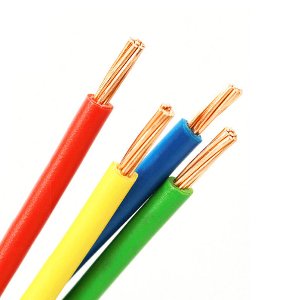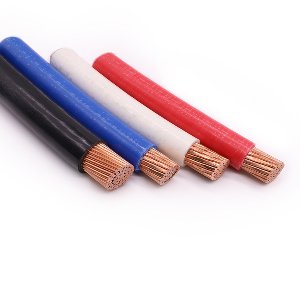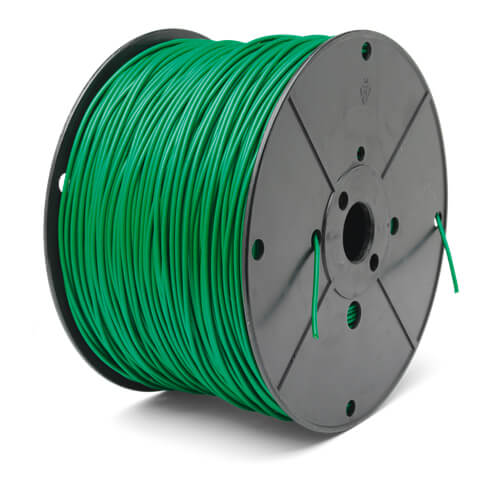- Leading Cable and Wire Manufacturer-ZW
- Boundary Wire
Boundary Wire
- According to CE, ISO9001
- Package:100/200/500/800 Meters
- According by your Design
Boundary Wire: The Definitive Guide
Did you know that the average person is only about six feet tall? And yet, the average American home has a property line that extends 50 feet from the house! This discrepancy is because most homes come with a boundary wire (sometimes called a perimeter wire) that runs along the property line.
A boundary cable is simply a long, wire buried underground. It is used to create an invisible barrier around your property. The boundary wire is connected to your home’s electrical system. An electrical current runs through the wire when the system is turned on. This article will discuss the various types of boundary wires, installing them, and choosing the right type for your needs.
What is a Boundary Wire?
A boundary wire is typically a 14-gauge boundary wire or 20-gauge boundary wire, the single-strand wire buried underground. The wire is used to make an unnoticeable barrier around your home. The electrical system of your home is linked to the boundary wire. An electric current runs through the wire when the system is switched on.
The current flowing through the wire acts as a deterrent for burglars and trespassers. The current also keeps pets and animals from straying into your property. Boundary wall wire is also known as a fence wire, mower wire, or garden wire.
Before commissioning, laying the cable is critical. With mower boundary wire, you can be assured your mower will stay within the desired boundaries.
Lying the wire for boundary also has other uses. You can use it as a safety measure to keep people away from certain areas of your property. For example, you might use it to keep children away from a swimming pool.
How Do I Find The Boundary Wire?
Finding the boundary wire can be a challenge, especially if it has been buried long. The best way to find the boundary wire is to use a metal detector. You can also try using a rake to dig around the perimeter of your property.
Over several weeks, gradually lower your mower’s height to the desired level while maintaining it on the highest cutting setting. Periodically walk around the perimeter of your grass to check for any boundary wire that hasn’t been completely buried. To find boundary fence wire, some crucial steps include:
Scanning With A Metal Detector:
This is the most common and easiest way to find any boundary wire. You can purchase a metal detector at your local hardware store. With the help of a metal detector, you’ll be able to find the wire even if it’s buried several inches underground.
Use A Rake:
If you don’t have a metal detector, you can try using a rake. Slowly rake around the perimeter of your property. If you feel resistance, there’s a good chance you’ve found the boundary wire.
Check The Base Of Your Fence:
If you have a fence, there’s a good chance the boundary wire is running along its base. Carefully examine the base of your fence to see if you can find the boundary cable. Almost all fences have a small section that can be removed to get a better look.
Look For Signs Of Damage:
Another way to find the boundary wire is to look for signs of damage. If the wire has been damaged, it will be easier to find. Look for any broken branches or trampled vegetation. These are all signs that the boundary wire has been disturbed.
Seek Professional Help:
If you’re still having trouble finding the boundary wire, you can always seek professional help. A professional will be able to quickly locate the boundary wire and get your lawnmower up and running in no time.
How To Twist Boundary Wire?
Twisting the boundary cable is a necessary step in the installation process. This will ensure that the wire is properly secured and won’t come loose over time. To twist the mower boundary wire, you’ll need a pair of pliers and a length of twine.
Twisting the two boundary wire together is generally considered the best way to secure them. This will create a strong bond that won’t be easily broken. Usually, people use a length of twine to twist the boundary wires together. This is because twine is strong and won’t break easily.
To twist the boundary wire together, start by holding one end of the wire in each hand. Then, use your pliers to twist the wires together. Once the wires are twisted together, use your twine to secure them. Wrap the twine around the wires and tie it tightly.
Make sure you wrap the twine around the wires several times. This will ensure that the boundary wire is securely fastened and won’t come loose over time. After that, rejoin the twisted wire to the boundary loop on one side and reconnect the other side of the twisted wire to the transmitter in your home.
Generally, it’s good to have at least two twists in the boundary cable. This will create a stronger bond and make the boundary wire less likely to come loose. Automower boundary wire is made of high-quality materials designed to withstand the elements. However, it’s still a good idea to ensure that your boundary wire is properly secured.
Is It Necessary to Lay the Boundary Wire Underground?
No, it is not necessary to lay the boundary wire underground. You can either bury the wire along the perimeter of your property or keep it above ground using stakes or other supports. If you have pets that dig, you may want to consider burying the wire to prevent them from damaging it.
Most people choose to lay the boundary wire underground because it is less likely to be damaged and easier to hide. Additionally, it can help keep your dog contained in a particular yard area. However, it is unnecessary to do this, and some people prefer to place the wire above ground. It depends on your preference and what you think will work best for your situation.
Quick Startup:
- Put the boundary wire around the perimeter of your lawn.
- Dig a small trench for the wire, if desired.
- Connect one end of the boundary safety wire to the charging station.
- Run the wire around your lawn and back to the charging station.
- Connect the other end of the boundary cable to the charging station.
- Turn on your robot lawn mower.
- Place the mower on your lawn and let it do its thing!
What Is the Best Wire to Use for Your Boundary And How To Choose It?
By now, the boundary wire is a vital part of your robot lawn mower system. This keeps your mower in bounds and prevents it from leaving your property.
Choosing the right boundary wire is essential. The wrong type of wire can lead to problems with your mower, such as shortened battery life, decreased mowing performance, and even the mower leaving your property.
When choosing boundary wire for your robot lawn mower, there are a few things you need to keep in mind:
Material:
The material of the boundary wire is essential. The wire needs to be durable and weather-resistant. Look for boundary wire that is made of copper or aluminum. These materials are durable and will last a long time. A PVC-coated wire is also a good option. This type of wire is weather-resistant and will protect the wire from the elements.
The gauge of the boundary wire is also influential. The thicker the wire, the better. A thicker boundary wire will be more durable and will last longer. It’s also less likely to break. Look for a 14 gauge boundary wire or 16 gauge. This will be thick enough to withstand the elements and last long.
Single-Core Or Twisting:
Another thing to consider is whether you want a single core or twisting boundary wire. A single core boundary wire is one continuous piece of wire. This type of wire is less expensive and easier to install. However, it’s more likely to break. The twisting boundary wire is two pieces of wire that are twisted together. This makes the wire more durable and less likely to break. However, it’s more expensive and harder to install.
Thickness & Flexibility:
Typically, the thicker and more flexible the wire, the better. A thicker, more flexible wire is less likely to break. However, you also need to consider the installation process. A thicker, more flexible wire will be more complex to install than a thinner, less flexible wire.
Boundary Wire Price:
The price of the boundary wire is also important. You don’t want to spend too much on the wire, but you also don’t want to skimp on a cheap, flimsy wire. Look for boundary wire that is priced around $0.10 per foot. This is a reasonable price for high-quality boundary wire.
Conclusion:
A good boundary wire is essential for your robot lawn mower. The right type of boundary wire will be durable, weather-resistant, and thick enough to withstand the elements. It’s also important to consider the price of the boundary wire. However, choosing the cheapest boundary wire isn’t always the best option. A high-quality boundary wire will last longer and be less likely to break.





